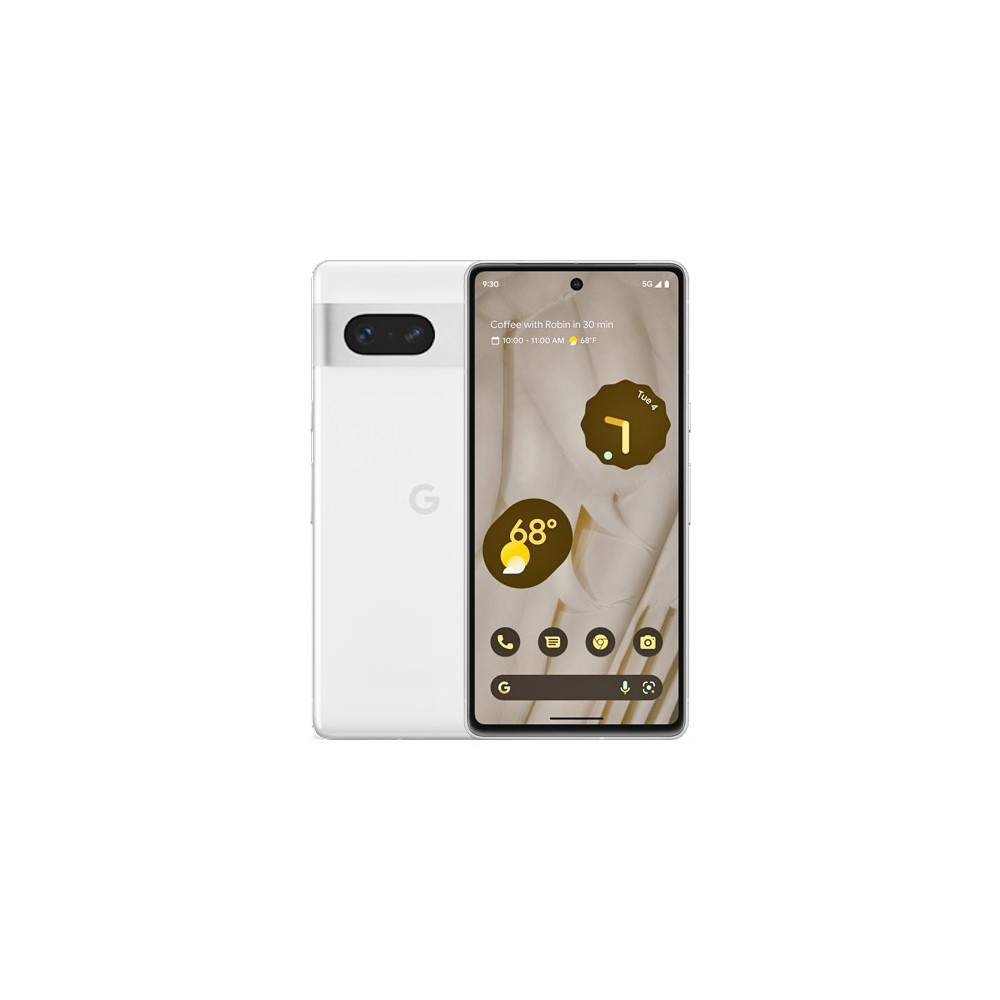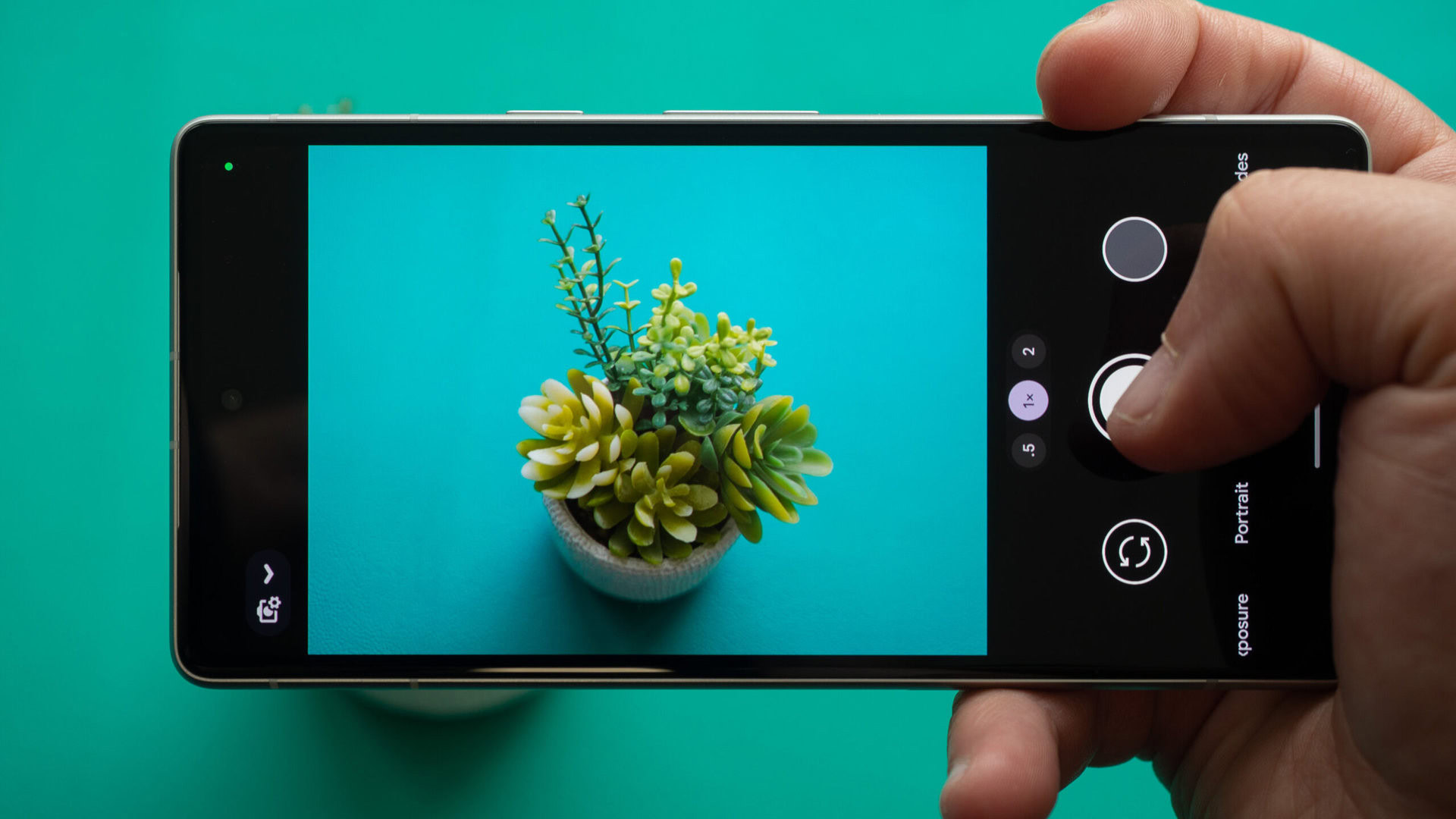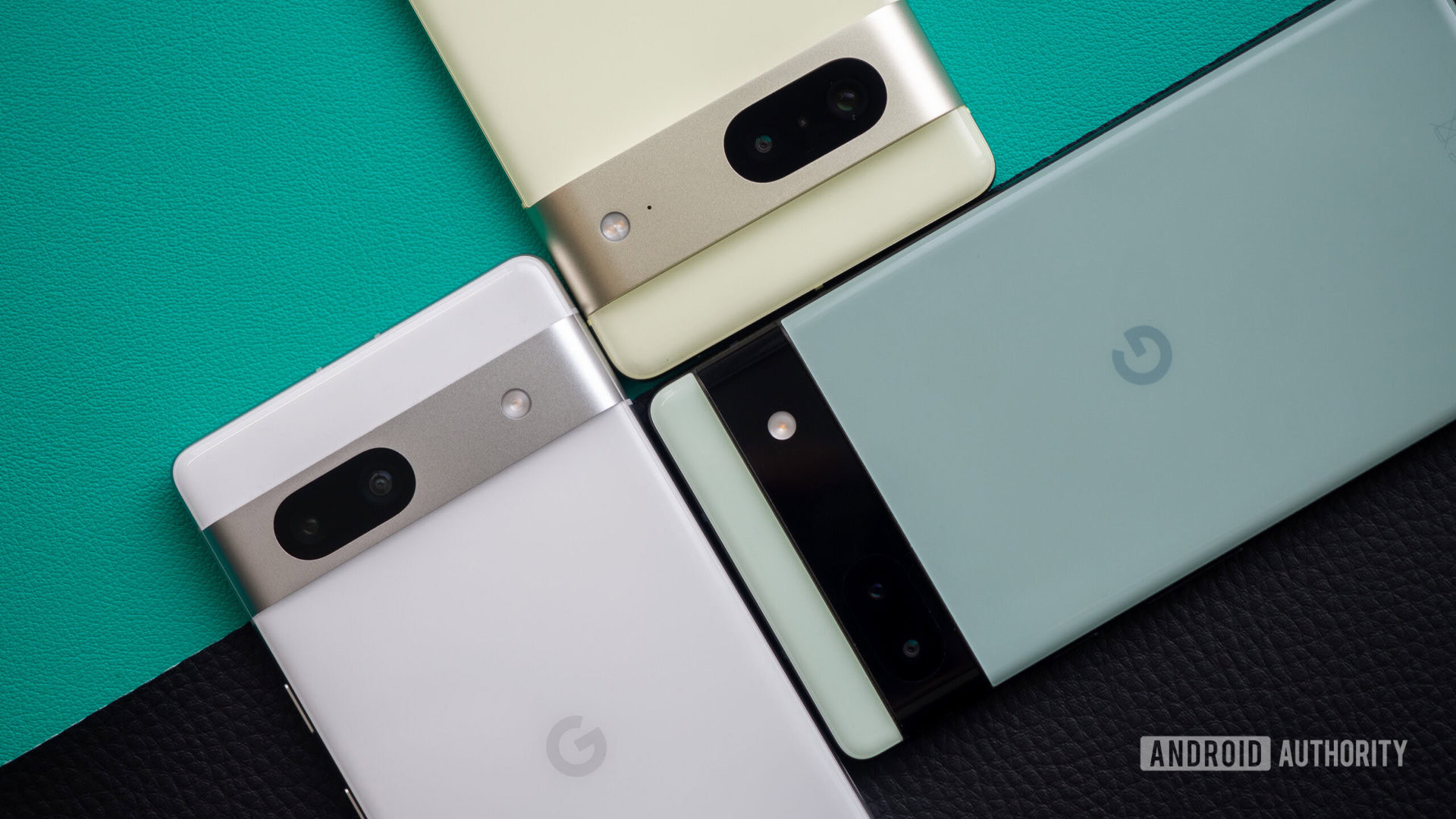Affiliate links on Android Authority may earn us a commission. Learn more.
Google Pixel 7a camera shootout: Three steps forward, one step back
Published onMay 10, 2023
With the new Pixel 7a, Google has taken several steps forward in its Pixel A series photography journey. Several features that were previously exclusive to the higher-end Pixel 7 and 6 lineup have trickled down to the 7a, partly due to better hardware sensors, but also thanks to the Tensor G2 chip and its local processing and AI chops. But how do these on-paper improvements stack up in real life? Is this one of the best camera phones in its price range or does it falter? We’ve put the Pixel 7a up against the older Pixel 6a and the higher-end Pixel 7 in a camera shootout to see.


Google Pixel 7a camera specs explained

The Pixel 7a packs three upgraded camera sensors. The main camera is now a 64MP sensor with pixel binning, the 13MP ultrawide has a larger 120-degree field of view and supports autofocus, and the selfie shooter is an improved 13MP sensor with a wider 95-degree angle to help you fit more people or more background in the frame.
But not every change is necessarily a good one. Notably, the main 64MP sensor has smaller pixels (0.8 microns compared to the Pixel 6a’s 1.4 microns and the Pixel 7’s 1.2 microns) and thus captures less light per pixel. The binning process, which merges four adjacent pixels into one to result in a 16MP image, partly makes up for it.
The main 64MP sensor has smaller pixels than the Pixel 6a or 7 and thus captures less light per pixel.
Despite the smaller pixel size, Google has still implemented 8x Super Res Zoom on the 7a, similar to the Pixel 7. A mix of cropping from the 64MP sensor and digital zoom gives you 16MP photos, even at the 8x zoom level.
Additionally, the Pixel 7a is inheriting other features from the more expensive Pixel 7 series: faster night mode captures, a new long exposure mode for those fun wavy water or traffic light streaks effects, Magic Eraser, and the excellent Photo Unblur to clean up and sharpen any (old or new) photos. Action pans are missing, though, so you can’t “freeze” a car or bicycle in the middle of the road like on the Pixel 7 series.
Like all recent Pixels, it packs an astrophotography mode with timelapses, a panorama and Photo Sphere mode, and a 1x and 2x portrait mode. Google’s Top Shot, Frequent Faces, and Face Unblur are there to help you get the best possible snap, no matter how much your subjects move while you’re taking a pic of them. And the camera app has its signature framing hints to better align your shots, two exposure sliders for brightness and shadows, and a manual white balance slider.
The Pixel 7a is inheriting a lot of the camera features that were exclusive to the more expensive Pixel 7 and 6 series.
Video also received some upgrades compared to the Pixel 6a across the board. The ultrawide lens can now record 4K video at 30fps and do 1080p cinematic pans, while the selfie shooter is now capable of 4K video at 30fps and 1080p at 60fps. There’s no 10-bit HDR, audio zoom, or cinematic blur mode — those remain exclusive to the Pixel 7 and 7 Pro — but you still get the slow-motion and timelapse modes as well as the four different stabilization modes (standard, locked, active, and cinematic pan).
Below are the phone’s detailed camera specs. If you’re looking for the full Pixel 7a specs, you can find them at that link.
| Google Pixel 7a | |
|---|---|
Main camera sensor | • 64MP • f/1.89 • 80-degree FoV • 0.8-micron pixels • 1/1.73-inch sensor • Dual-pixel PDFA, OIS • 8x Super Res Zoom |
Ultrawide camera | • 13MP • f/2.2 • 120-degree FoV • 1.12-micron pixels • Auto-focus |
Front selfie camera | • 13MP • f/2.2 • 95-degree FoV • 1.12-micron pixels • Fixed focus |
Main sensor video | • 4K/30fps, 4K/60fps • 4K Cinematic Pan • 1080p up to 240fps • 1080p active video stabilization • Digital zoom up to 5x |
Ultrawide sensor video | • 4K/30fps • 1080p Cinematic Pan • 1080p/30fps, 1080p/60fps |
Front sensor video | • 4K/30fps • 1080p/30fps, 1080p/60fps |
Google Pixel 7a camera shootout
In sunny, outdoor circumstances, the Pixel 7a performs just as well as the Pixel 6a and Pixel 7. The two photos here are virtually indistinguishable between the three phones, with the same color science, exposure balancing, and clarity. If you look really, really closely, though, you’ll notice that the Pixel 7a’s 80-degree field of view falls right between the wider Pixel 7 (82 degrees) and narrower Pixel 6a (77 degrees).
Feel free to pixel-peep there at the full-resolution version of all the image samples and more in this Google Drive folder.
Very solid HDR performance
In more challenging exposures, the Pixel 7a starts showing some of its prowesses. Notice how noisy the Pixel 6a shot is compared to the Pixel 7a and 7 here. The 6a also over-exposes the clouds and the entire shot veers a little yellower/greener. Pixel binning helps the 7a and 7 capture more detail and a better balance between the darker parts of the cat sculpture and the brighter sky.
Mitigated zoom results
I had high hopes for the Pixel 7a’s 8x Super Res Zoom, but the results leave me scratching my head a little. Upon closer inspection, I noticed that every single zoom snap on my 7a was softer than the other phones. So much so that I thought my lens had been smudged or I’d received a faulty unit. But my lens is clean and with four different Pixel 7a units in our Android Authority team’s hands, we’ve confirmed these results. The effect varies with distance, subject, and zoom level, though, so it’s not an absolute deal-breaker across the board.
Take this 2x bunny shot for example. The Pixel 7a’s snap is a little over-exposed, while the 6a is under-exposed and more noisy as expected. Nothing drastically offputting until you pinch in to check out the details. The 100% crop clearly shows the Pixel 7a’s very soft edges around the bunny’s facial features. Yes, the Pixel 6a tends to apply a lot of sharpening and is more noisy, but it still looks better to me than the Pixel 7a. The Pixel 7, of course, is the best of the three.
This extra softness is more obvious when you zoom further. In these 4x and 8x boat shots (7x for the Pixel 6a because that’s the maximum), the Pixel 7 still provides the best shots by far, though the result is mediocre and very watercolor painting-like compared to a proper telephoto lens. But the Pixel 7a and 6a battle it up over different kinds of “bad.” The former’s soft and smudged effect is quite obvious, on top of a greener color tone, though it does manage to capture some subtle details that the 6a doesn’t. The 6a’s shots have a purple hue, extra sharpening and contrast, and less detail, but they still give the impression of a better overall photo than the 7a’s smudged muddle.
However, as I said earlier, the problem is quite relative. It’s more obvious in landscapes and with objects that are further away, but less so in photos shot from a closer distance. Take this fully zoomed-in public sign snap. The Pixel 7a’s zoom softness is present but less pronounced and definitely less detrimental to the photo. Compared to the Pixel 6a, you can see more detail and the letters are more legible in the 100% crop, despite their muted contours. The Pixel 6a’s over-sharpening and noise are more apparent here, some letters have shades of yellow and blue, and it’s quite evident that Google’s famous Machine Learning magic was trying to fill in the blanks with detail that isn’t there to begin with, to give the illusion of a higher-quality image.
This is a perfect example of how everything in the Pixel 6a’s zoom post-processing works against it, while the Pixel 7a produces a better overall snap. Again, though, the Pixel 7 comes out on top of both.
Our best guess regarding this extra softness is a lens diffraction problem, with the lens not focusing the light sharply enough to resolve the sensor’s resolution. If that’s the case, this hardware issue can’t be solved with a software update, but Google could mitigate it by automatically applying a bit of smart sharpening and unblurring in post.
As a matter of fact, I used the Pixel 7a’s built-in Photo Unblur feature in Google Photos to do just that with the boat pic. Here’s the result with the effect applied at full strength. Of course, this didn’t add more detail, but it made the photo noticeably sharper. It’s almost as if the lens was smeared with Vaseline and has been cleaned.
Great low light and night mode photos
The Pixel 7a also takes a step ahead of the Pixel 6a in low-light situations. Even without the night mode enabled in this purple hour shot, you can see it catch more detail with less noise. It’s almost as good as the superior Pixel 7.
Night shots amplify this difference and the Pixel 7a’s faster Night Sight mode shines here. In my time testing the three Pixels, the 7a was as fast as the 7 in focusing and snapping the picture, while the 6a took a good one to two seconds to even start the capture, then double the time to snap the actual photo. The Pixel 7a’s resulting images are also better balanced and less hazy than both — the 6a pushes the highlights too far and shows little contrast in comparison to the other two. If it wasn’t for the more pronounced lens flare, I’d put the Pixel 7a above the 7 here.
When you add zoom into the night mode mix, all three phones struggle a lot. Again, the 6a takes a lot longer to initiate the capture and requires you to keep your hand steady for double the time. When you factor in the fact that any small shake results in massive changes in the zoomed image, you can understand why this particular exercise isn’t these phones’ forte — but then again, we’re looking at midrange phones, so we’re not ducking points for this.
Still, there’s a bit to glean from these samples. Easier and faster focus means the Pixel 7a obviously trumps the 6a in terms of detail, even if the edges are again a bit soft. The Pixel 7 provides a better result overall, though not by much.
Less pronounced portraits, but it’s a quick edit away
The Pixel 7a sees a vast improvement over the 6a in portrait shooting. It has better lighting, better HDR balance, and better skin tone thanks to Google’s Real Tone science. The result is very close to the Pixel 7 (albeit the 7a zooms in a bit closer), whereas the Pixel 6a completely mishandled the situation here. It blurred the entire photo, not just the background. A look at Google Photos showed blur applied at level 99, so I was able to recover details and salvage the shot by decreasing that.
However, portrait mode on the Pixel 7a confused me several times during my tests because I thought the phone wasn’t properly triggering the portrait effect. After a bit of digging, I realized the image post-processing was applying very minimal blur to the background, thus creating nearly imperceptible bokeh. It’s the opposite problem of the 6a, which is much more liberal with its bokeh, while the Pixel 7 balances things better.
Take this shot of the pupperly-suited @itskilifromdxb (I promised him a plug because he was such a good boy and stood very still while I juggled three phones and several portraits). You’d be forgiven to think that the Pixel 7a snapped a regular image, not a portrait one, but that’s because the phone’s algorithms are only applying negligible blur. A quick pop into Google Photos to slide the blur level from 12 to 35 and we have better bokeh and more pronounced edges (save for the whiskers).
In comparison, the Pixel 6a is more heavy-handed with its bokeh once again, resulting in a very artificial-looking shot, while the Pixel 7 finds a good spot in the middle. The Pixel 6a also struggles with edge detection, keeping the chair leg right behind Kili’s face in focus, while the 7a and 7 rightfully blur it.
The same thing can be noticed in these 2x portraits. The Pixel 7a’s conservative bokeh can be pushed a bit in Google Photos for a more pleasing portrait result.
Pixel 7a ultrawide camera shootout
Moving on from the main camera sensor, the Pixel 7a’s ultrawide is a noticeable improvement over the 6a and I’d dare say even the Pixel 7. In sunny outdoor conditions, the results are very similar again with the same color tuning and contrast, but the Pixel 7a’s 120-degree angle provides a more dramatic shot.
Upon closer inspection, I noticed that the 7a has flipped the tables on its counterparts here. Its ultrawide sensor produces sharper images with more detail, while the Pixel 6a and 7 appear softer. The sharpness drops a little toward the edges, but not in any significant way.
The difference is more pronounced in heavily-contrasted environments like this cat shot. Once again, the Pixel 6a is darker and yellower/greener. It struggles with the color balance and a 100% crop shows much more noise — see the blotches on the grey post behind the cat’s tail. The Pixel 7 is better, but still suffers from noise and similar but smaller blotches on that grey post. The Pixel 7a wins this round with less noise, more detail, and a better-balanced photo overall.
I also noticed that the addition of autofocus means you can use the Pixel 7a’s ultrawide lens to shoot focused close-up photos from a smaller distance than the 6a or 7 would allow. There’s no proper macro mode like on the Pixel 7 Pro, but it’s still a small bonus.
Pixel 7a selfie camera shootout
Despite the improved front sensor (13MP with a larger field of view), the Pixel 7a provides very similar selfie shots to the Pixel 6a’s 8MP camera. The two are also nearly identical to the Pixel 7. Feel free to nitpick all the differences between these wide, zoomed, and portrait selfie shots of my colleague Ryan Haines, but I’d say the results are virtually identical. The Pixel 7a captures just a smidge more detail and has a slightly wider field of view, but that’s it.
Google Pixel 7a camera shootout: The verdict

Overall, Google has another winner on its hands with the Pixel 7a, although the results aren’t a complete landslide compared to its predecessor, especially with the raised asking price. Better HDR, low light, and ultrawide performance, as well as a faster and more foolproof night mode, are the highlights of the Pixel 7a versus Pixel 6a camera show, while the portrait mode could use a little fine-tuning and the 8x Super Res Zoom isn’t all it’s meant to be.
Does the Pixel 7a take good photos?
Future software updates could mitigate these issues, for sure, and I hope Google will enhance the blur level in portraits out of the box and add a bit of sharpening to combat the soft zoom shots. Would those improvements be enough to put the Pixel 7a’s camera on par with the higher-end Pixel 7? Maybe not fully, but the difference would be almost indistinguishable, and for under $500, you won’t find a better camera phone. To dive deeper into the Pixel 7a’s other features and aspects, check out our Pixel 7a review.


Solid performance and plenty of RAM
Improved 90Hz display
